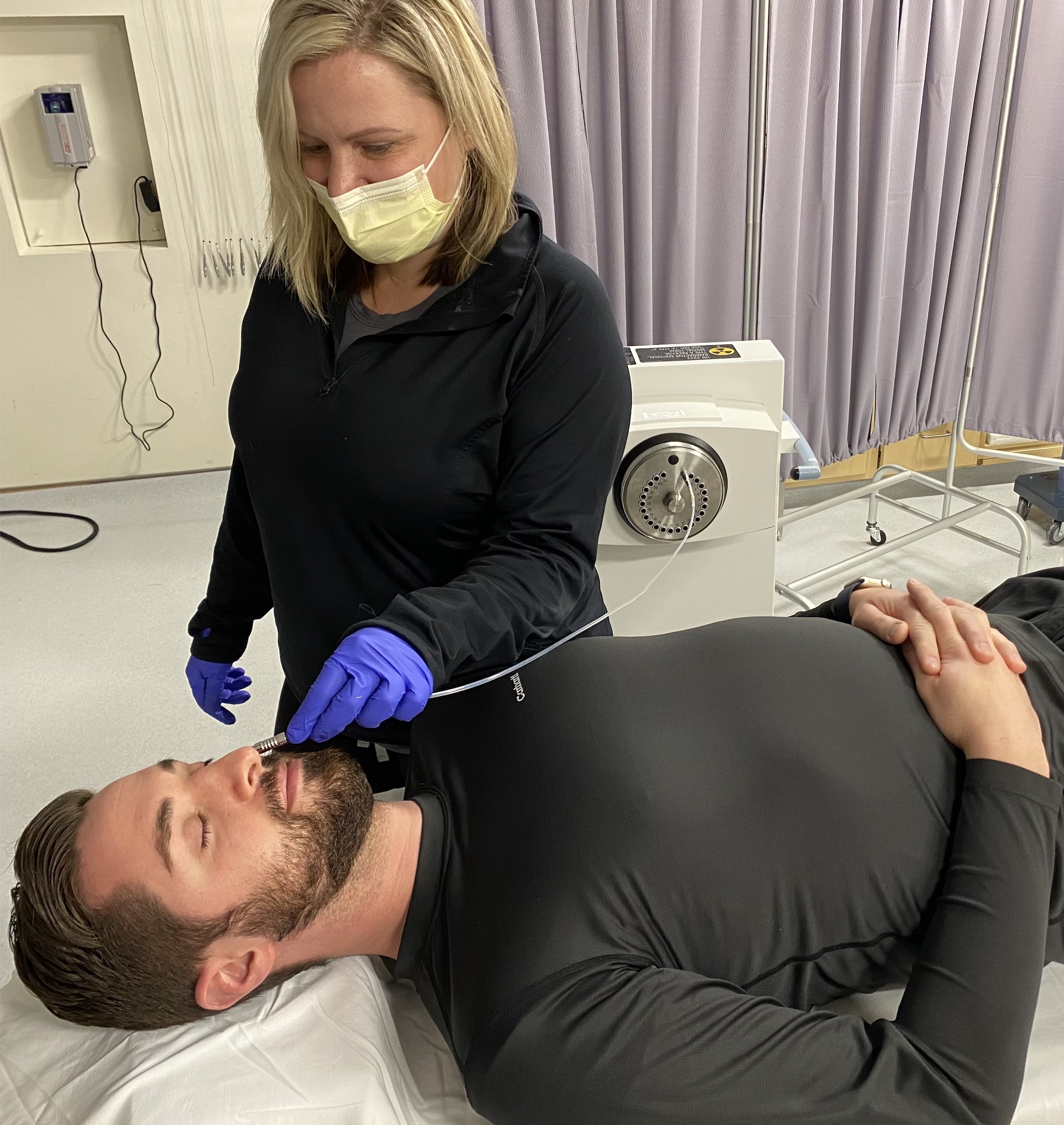Brachytherapy for Lung Cancer
What is brachytherapy?
Brachytherapy is a kind of radiation treatment where a source of radiation is put inside your body. This allows a higher dose of radiation to reach the area where the tumor is or was before surgery. High Dose Rate (HDR) brachytherapy helps to shrink the tumor and is typically used if the tumor is in the major bronchi, blocking an airway. Tumors in the lung tissue, rather than the bronchi, are better treated with external beam radiation therapy (EBRT).
The radiation only travels a short distance from the source, reducing the radiation exposure to nearby healthy tissues. Nearby healthy tissues include:
- The adjacent (nearby) normal lung.
- Heart.
- Esophagus.
- Spinal cord.
You may have this treatment and other treatments.
Endobronchial Brachytherapy
Endobronchial brachytherapy is usually given as an outpatient treatment in the radiation oncology department with the help of your pulmonologist. It is often given as 3 treatments spaced 1 week apart. Sometimes, it can be done during surgery.
What can I expect during endobronchial brachytherapy?
The typical steps are:
- Your provider will numb the back of your nose and throat with a numbing spray.
- A hollow, flexible tube called a bronchoscope is placed through your nostril, into your nose, and down the back of your throat. It will go down through the airway to allow your provider to see the area that is blocked.
- A smaller tube, called a catheter, is also put into the lung. This is the tube that the radioactive source will travel through.
- The bronchoscope is removed, leaving the tube in place. A CT scan or an x-ray is done to ensure the catheter is in the correct place. This image will be used to plan your treatment.
- The tube is then attached to the brachytherapy machine, called an afterloader. The afterloader sends the radioactive source to the end of the tube in your lung, where it delivers the radiation. The treatment can last 3 to 15 minutes.
- The afterloader is operated from outside of the treatment room. Your care team will not be in the room during the treatment, but they can hear and see you. You will be able to talk with the team during treatment if you need to.
- After the treatment is done, the radiation source is automatically retracted (moved) back into the afterloader. A member of the care team will double-check that the source was properly retracted.
- The tube will then be removed from your nose. You will not be radioactive after the treatment. You will likely be able to go home one to two hours after your treatment is done.
What are the benefits and side effects of endobronchial brachytherapy?
Benefits include:
- It can be done as an outpatient procedure.
- Treatment time is short.
- Less radiation to healthy tissue (adjacent normal lung, heart, esophagus, and spinal cord).
- Higher doses of radiation than possible with EBRT can be given.
- An accurate way to deliver radiation since the disease cannot be seen on a CT scan.
- No surgical incisions (cuts).
- Less risk of side effects.
Possible side effects can include sore throat, cough, shortness of breath, coughing up blood and increased phlegm (mucus).
Interstitial Brachytherapy
Interstitial brachytherapy for lung cancers is rarely used and is more invasive. It can be used along with other treatments such as EBRT. This treatment can be done using permanent (lifelong) or temporary (short-term) implants.
Permanent Implants
With permanent implants, the radioactive seeds are either put directly into the tumor or the tumor bed after surgery. When put into the tumor directly, radioactive seeds are placed using needles and the seeds will stay there forever. If seeds are put in during surgery, the primary tumor is removed, and then radioactive seeds are sutured (sewn with stitches) to the edge of the tumor bed. This is done to kill any cancer cells that may not have been taken out during surgery.
Temporary Implants
Temporary implants can be used to treat mediastinal, paravertebral, or chest wall tumor beds after the tumor has been removed. Tubes (catheters) are put in the tumor bed, and the radioactive source travels through the tube to the treatment area. Treatment time can vary but often lasts about 3 to 4 minutes. After treatment is done, the radioactive source and tubes are removed. This treatment is usually done 3 to 5 days after surgery.
Your provider will talk to you about your option for brachytherapy to treat your lung cancer. Make sure to ask your provider any questions you may have.
